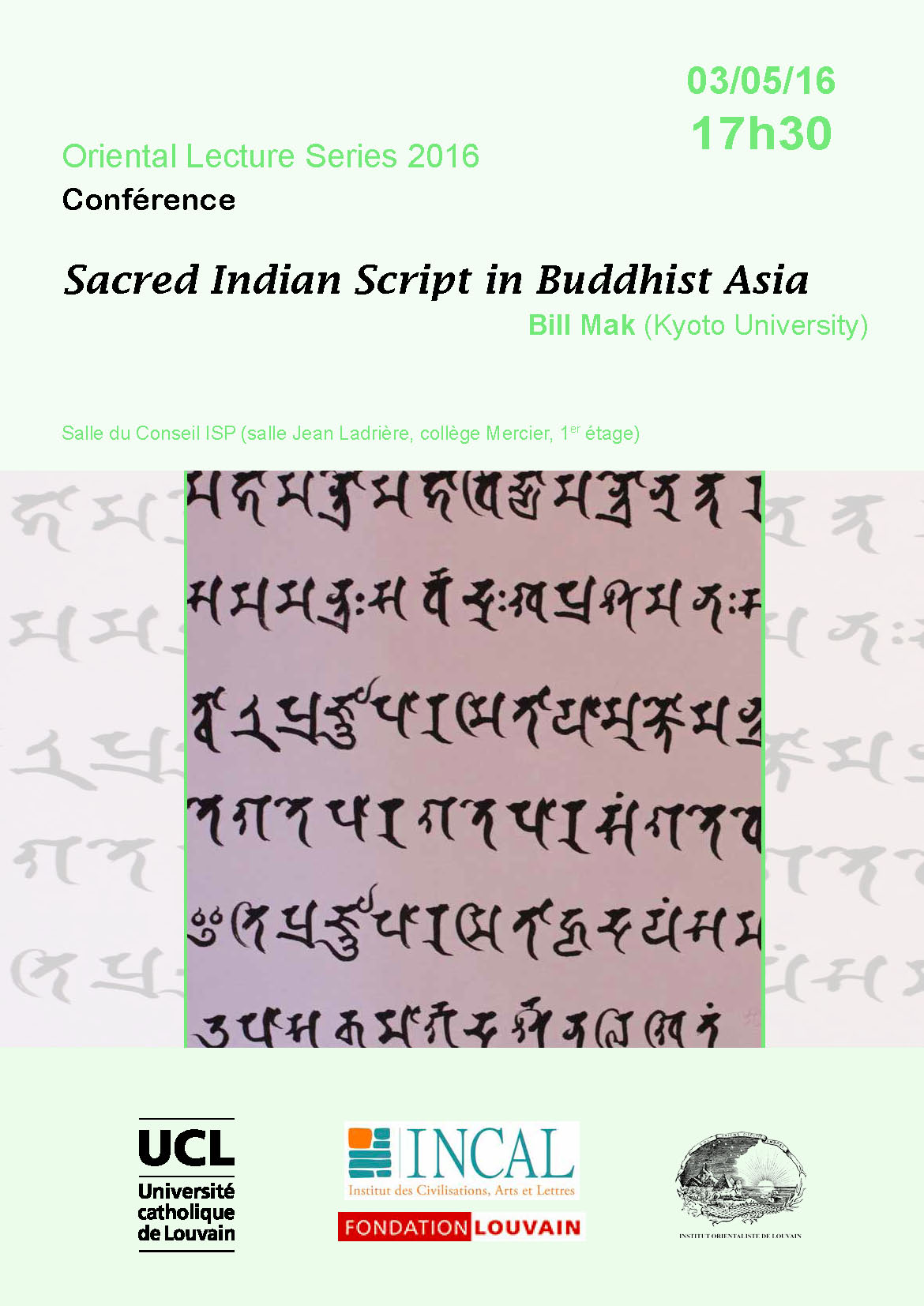A lecture on “Siddham — Sacred Indian Script in Buddhist Asia” (May 3) at Université catholique de Louvain.
Abstract:
Since the beginning of the first millennium when Buddhism was first introduced to China through the land and maritime Silk Roads, the East Asian Buddhists had a fascination with not only the teachings of the Buddha, but also the sacred Indian teachings in their written forms. Coming from a highly literate culture, the Chinese Buddhists in the following thousand years engaged in a large-scaled translation project and produced voluminous Buddhist canons which profoundly impacted the Chinese language and culture. Meanwhile, Sanskrit, the canonical language of Mahāyāna Buddhism, took on a more abstract role and became an object of awe and veneration in the East Asian psyche. However, unlike the Indians who placed great emphasis on sound rather than the written words, the East Asians turned Sanskrit orthography into a serious yet esoteric learning. From sophisticated phonetic analysis to highly ornate calligraphy, the study of Siddham encompasses an aspect of Indian culture which might have been marginal in its native land, but has remained a great source of inspiration in East Asia. In this lecture, we shall examine the identity and aesthetic of Siddham, which was transmitted as far as to Japan where both its knowledge and practice are still preserved as a living tradition.

A seminar on “Les stèles bouddhiques” (May 4) at Université Libre de Bruxelles.

The seminar will be the beginning of an interesting international project on the Uṣṇīṣavijayadhāraṇī – a powerful “ritual ideology which swept across Asia with attendant ceremony and iconography” (as Peter Skilling put it) in the seventh century CE.
